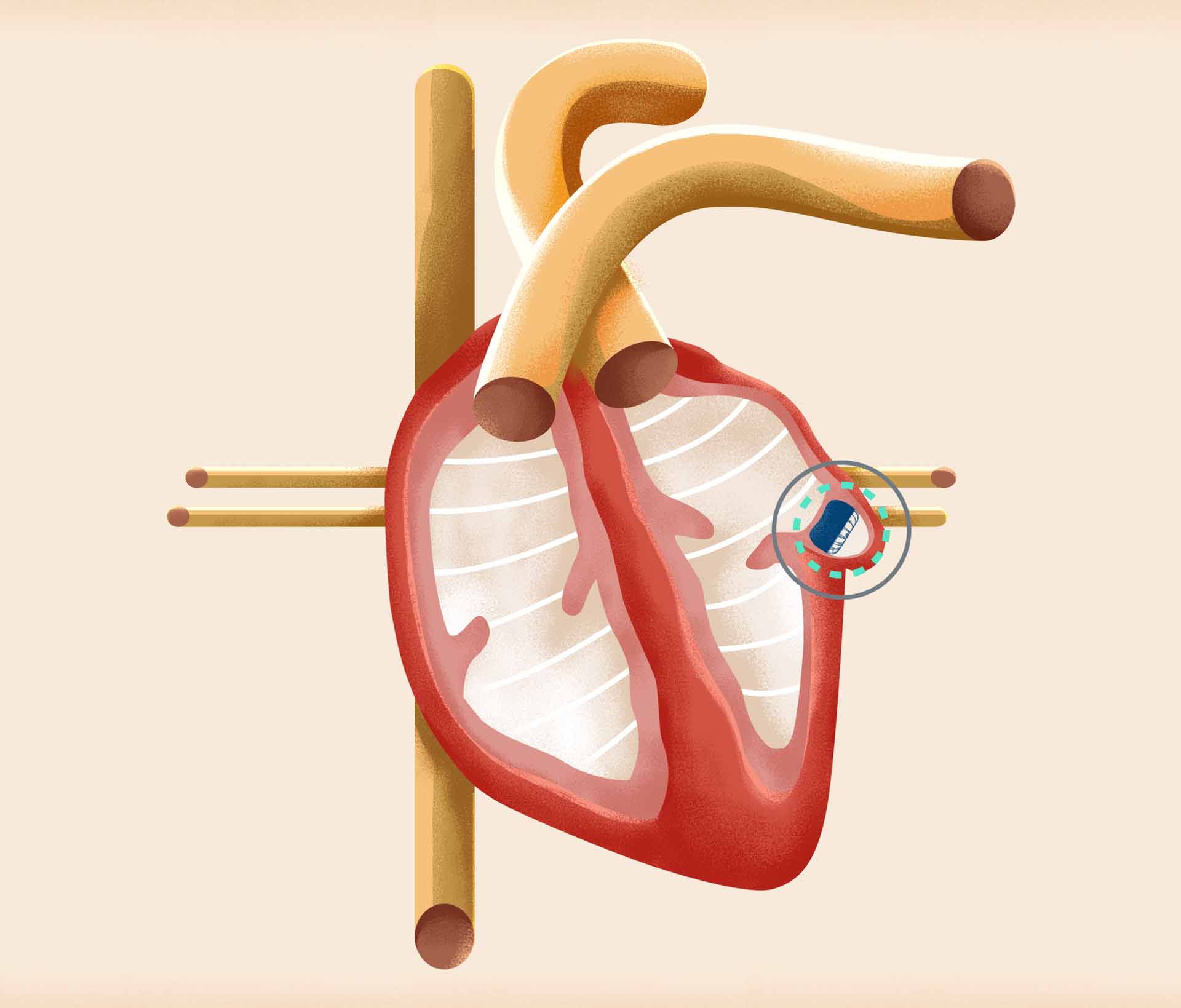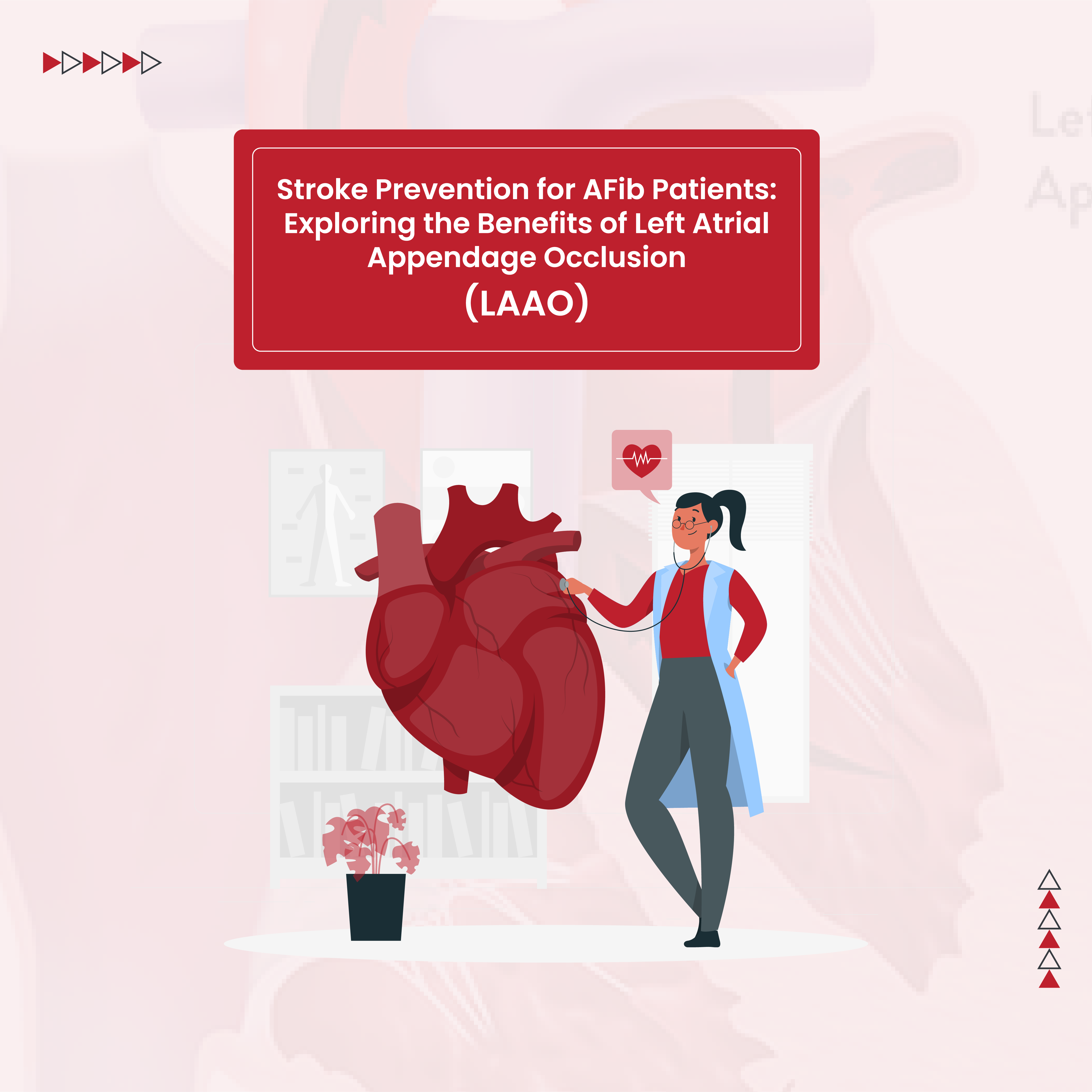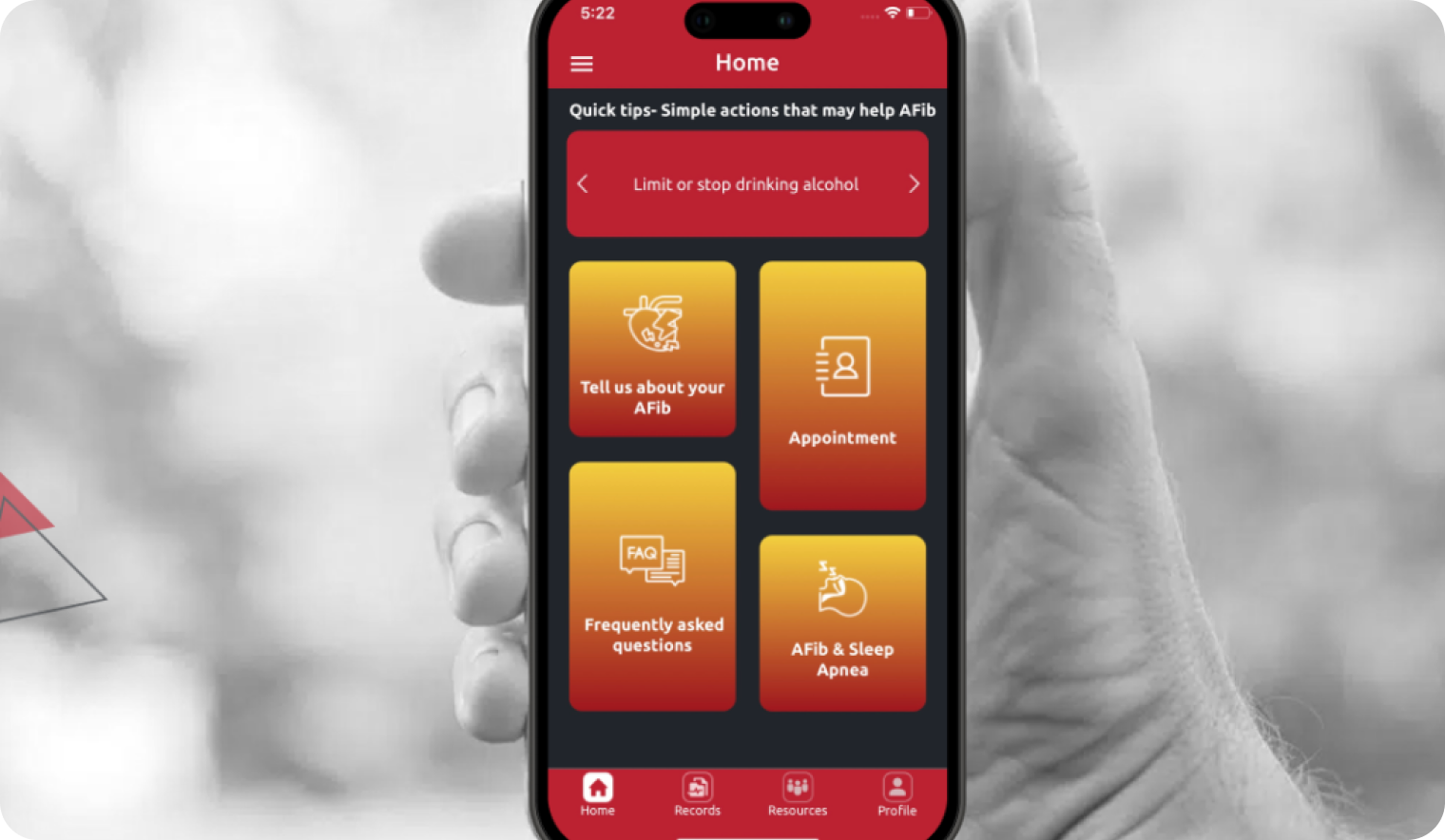Atrial fibrillation is an abnormal heart rhythm (arrhythmia) that originates in the upper chambers of the heart (atria). When the heart is in atrial fibrillation the atria quiver and moves blood through the heart less effectively. This causes blood to pool in the heart and increases the risk of blood clot formation and stroke. People with atrial fibrillation have a 5 times increased risk of stroke when compared to people who have a normal heart rhythm. Blood thinners are often prescribed to reduce the risk of stroke. However, long-term use of blood thinners is not an option for some people due to bleeding risk or other issues.
For some people, atrial fibrillation is caused by structural abnormalities with the heart valves. However, the majority of atrial fibrillation is not caused by heart valve problems and is called non-valvular atrial fibrillation.
The Watchman device is an alternative option for people with non-valvular atrial fibrillation who are at increased risk of stroke but are unable to take blood thinners long term. The Watchman is a permanent device that is implanted in the heart to reduce stroke risk. The Watchman procedure is a safe, one-time procedure that helps people with non-valvular atrial fibrillation eliminate the need for long-term use of blood thinners.
Who is eligible for the Watchman procedure?
People with non-valvular atrial fibrillation who are at an increased risk of stroke and need an alternative to long-term use of blood thinners may be eligible for the Watchman device. There are certain risk factors that make someone more likely to have an atrial fibrillation-related stroke. To calculate your risk of stroke, your doctor will use the CHA2DS2 VASc risk calculator. With this calculator, points are given for each stroke risk factor you have.
- C-Congestive Heart Failure. (1 point)
- H-Hypertension (High Blood Pressure). High blood pressure or currently taking blood pressure medication. (1 point)
- A2-Age 75 Years or Older. (2 points)
- D-Diabetes. (1 point)
- S2-Stroke, Transient Ischemic Attack (TIA), or History of Blood Clot. (2 points)
- V-Vascular Disease. History of heart attack, coronary artery disease or peripheral artery disease
- A-Age 65-74 Years. (1 point)
- Sc-Female. (1 point)
Atrial fibrillation-related stroke risk reduction is recommended for men with a score of 2 or greater and women with a score of 3 or greater. Blood thinners are commonly used to reduce the risk of stroke in people with atrial fibrillation and an elevated CHA2DS2 VASc score.
While blood thinners work well for many people, some people need an alternative option. The Watchman device is recommended for people with non-valvular atrial fibrillation who are unable to take blood thinners long-term. Reasons, why someone may be unable to take blood thinners long-term, may include:
- History or risk of falls
- History of bleeding (i.e. gastrointestinal bleeding, recurrent nose bleeds, recurrent blood in urine, etc.)
- Increased risk of bleeding due to lifestyle or occupation
- Increased risk of bleeding such as with cancer and certain blood disorders.
- Medication interactions
- Difficulty taking blood thinner as prescribed (i.e. side effects, missed doses, inability to afford medication)
What is the Watchman procedure?
The Watchman procedure is a minimally invasive procedure that can reduce the risk of stroke and eliminate the need for long-term use of blood thinners. During a Watchman procedure, a Watchman device is implanted inside the heart. The device is permanent and will not need to be removed or replaced. Over 90% of strokes associated with non-valvular atrial fibrillation are caused by blood clots that originate in the left atrial appendage. The Watchman device was designed to create a barrier across the opening of the left atrial appendage, effectively sealing it off from the rest of the heart and reducing the risk of stroke.
How common is left atrial appendage?
The left atrial appendage is a sac-like pouch of tissue that protrudes off the upper left chamber of the heart (left atrium). Scientists do not know exactly what role the left atrial appendage plays in normal heart function. Even when the heart rhythm is normal the left atrial appendage typically has decreased contractility compared to the rest of the heart. Atrial fibrillation further decreases the functioning of the left atrial appendage and it becomes a site for blood pooling and blood clot formation. When a blood clot leaves the left atrial appendage and enters into the bloodstream it can be taken to the brain where it can cut off blood supply and cause a stroke.
Does left atrial appendage removal to prevent strokes?
Left atrial appendage removal or occlusion (closure) prevents strokes associated with atrial fibrillation. Removal or occlusion of the left atrial appendage can eliminate the need for long-term use of a blood thinner if you have non-valvular atrial fibrillation. For example, studies have shown that 92-96% of people who undergo left atrial appendage closure with a Watchman device are able to stop their blood thinner approximately 45 days after the procedure.
How long does it take to recover from the Watchman procedure?
If you are considering a Watchman procedure, your doctor will take special images of your heart to visualize your left atrial appendage and determine if you are a good candidate for a Watchman device. The Watchman procedure itself is done under general anesthesia and typically takes about an hour to complete. After the procedure, you will stay overnight in the hospital.
To gain access to the heart, your doctor will insert a catheter (flexible tube) into a vein in your groin. The catheter is guided to the heart and into the left atrium. The Watchman device is deployed across the opening of the left atrial appendage. Throughout the procedure, your doctor will be using special imaging to visualize the inside of your heart. The Watchman device itself is not painful and people generally recover from the Watchman procedure quickly.
After the Watchman implant procedure, people are instructed to limit their activity and heavy lifting for approximately 1 week. The lifting and activity restrictions are to allow the groin time to heal and prevent a groin puncture bleed.
Is the Watchman procedure safe?
The Watchman was created over 20 years ago. It has been studied in clinical trials and real-world experience. As with all invasive medical procedures, there are risks associated with a Watchman implant procedure. The risk of a major procedure-related complication is 0.5%. Risks of the procedure can include stroke, blood clots, injury to the heart, pulmonary vein obstruction, and bleeding.
What is the recovery time for the Watchman procedure?
After a Watchman procedure, it takes time for the body to form a layer of tissue over the Watchman device. While the body is creating this barrier over the Watchman device, you will be instructed to take a blood thinner and aspirin.
Approximately 45 days after the procedure, your doctor will do a special imaging study to check the Watchman and determine if you can stop your blood thinner. If it appears that an adequate barrier has been created to close the left atrial appendage your doctor will stop your blood thinner and prescribe a medication called clopidogrel (Plavix®). You will take clopidogrel and aspirin for 6 months. After that, you will stop clopidogrel and continue on aspirin, which will be continued indefinitely.
Does the Watchman device stop A. fib?
The Watchman device is used to decrease the risk of stroke associated with non-valvular atrial fibrillation. The Watchman does not stop atrial fibrillation. After a Watchman procedure, you will continue to work with your doctor to manage your atrial fibrillation through the use of medications or with a procedure like an atrial fibrillation ablation.








